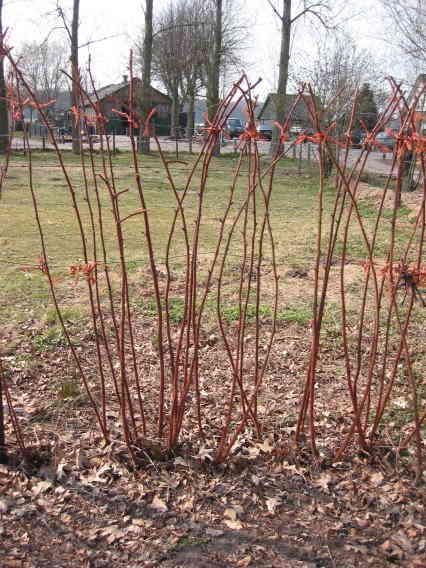Growing your own blueberries can be an amazing experience. Those sweet, slightly tangy, berries are far more juicier and healthier when you pick them from your garden than the ones you’ll find in grocery stores.
However, sometimes it can get really frustrating when things don’t go as planned. Instead of blooming and fruiting, your blueberry bush starts to drop leaves! There’s nothing alarming if your blueberry bush loses leaves in autumn. They are deciduous plants and will lose all their leaves to prepare for the winter dormancy. However, defoliation during the growing months shouldn’t be taken lightly.
Reader Poll: What online courses would interest you?
There can be a number of problems, including cultural problems and diseases, that could be causing the issue. Continue reading, and you’ll hopefully be able to pinpoint what’s causing the bush to lose its leaves and how to solve the issue.

5 Common Reasons For Blueberry Plant Defoliation
Excessive Use Of Fertilizers
One of the most common reasons for defoliation is excessive use of fertilizers. When amending the soil with granular fertilizer, it’s possible that you either disturbed the roots or burned them due to contact with the fertilizer. Blueberry plants have shallow roots, so be careful when applying fertilizers. Damage to the roots may cause stress on the plants, resulting in defoliation. Cease all fertilization and keep the plant well watered to recover from the stress.
Subscribe to our newsletter!
Acid-based fertilizers are good choices for feeding blueberry plants but always apply them by sprinkling in a 3 feet circle around the base of established blueberry plants. Though the timing for fertilization application won’t typically affect the leaves, blueberry plants should be ideally fed just as the flowers are opening, and then again a month later.
Lack Of Water
Blueberry plants have shallow roots and will need consistent watering to avoid stress. Young plants need about an inch of water per week, while established plants need about 1 ½ to 3 inches of water each week, depending on the weather. You’ll need to be very particular about watering your blueberry bush during hot and dry summers. Even the well-established blueberry bushes can die if they’re not getting water.
If your blueberry bushes are already losing leaves due to a lack of water, consistent and deep watering will most likely revive the plants in about a week or so. Mulch the soil around the roots to conserve water and keep the soil moist between watering sessions.
Phytophthora Root Rot
Phytophthora root rot is a fungal disease caused by the pathogen Phytophthora cinnamomi. It appears during spring or fall, causing severe defoliation, and eventually the death of the bush. It’s a soil-borne disease that first hits the plant’s roots and then gradually moves up towards the leaves. Once the roots and stems are infected, the leaves start to turn shades of yellow and red. Eventually they turn brown and fall off. All new growth ceases. Excessive defoliation will typically result in the death of the plant.
The problem typically occurs in poorly drained soils and wet conditions. Although advanced stages of the disease cannot be cured, the extent of the problem can be halted by correcting soil drainage and applying fungicides, ProPhyt or Phostrol. Apply them as a foliar spray on a monthly basis throughout the actively growing season.
Twig Blight Of Blueberry
It’s a fungal disease caused by Diaporthe vaccinii that overwinters in plant debris and attacks the plants in spring with the spores dispersed through rain splashes and irrigation. The infection first hits the flowers and then spreads to the branches. It causes severe defoliation and the die back of fruit-bearing twigs in highbush and rabbiteye varieties. If left unattended, the problem can cause a yield loss of over 70%.
Pruning the infected branches and spraying benomyl on a weekly or fortnightly basis can control the disease and revive the plant. However, benomyl applications need to be stopped at least 21 days before harvest. If there has been a history of twig blight in the garden, avoid planting susceptible varieties, including Murphy and Harrison. Resistant varieties include Cape Fear, Reveille and Bluechip.
Alternaria Leaf Spot
Alternaria leaf spot is a disease caused by the fungus Alternaria tenuissima. It typically infects blueberry bushes during periods of cold, wet weather in spring. Though in most cases, only the lower leaves fall off, in the case of severe infections, defoliation affects the entire plant. Symptoms include brown or grey lesions on the leaves surrounded by a red border. Eventually the leaf falls off the plant. The pathogen can also cause post harvest decay in fruits.
Fungicides containing captan are an effective control technique for the problem. Mix two pounds of fungicide in 5 gallons of water and apply it as a foliar spray on a weekly or fortnightly basis. Don’t let the fruits over ripen on the bushes and cool them instantly after harvesting to inhibit the effects of the pathogen.
Conclusion
So now you know the possible reasons for your blueberry plant leaves falling off. Investigate the symptoms to know for sure exactly what might be causing it and address the problem accordingly. Employ good cultural practices, including proper watering and feeding schedules, to keep the effects of the problem to a minimum and decrease the chances of future problems. Make sure your blueberries are growing in well-drained soil, with a pH between 4.5 and 5.5, and receive plenty of sunlight throughout the day.

